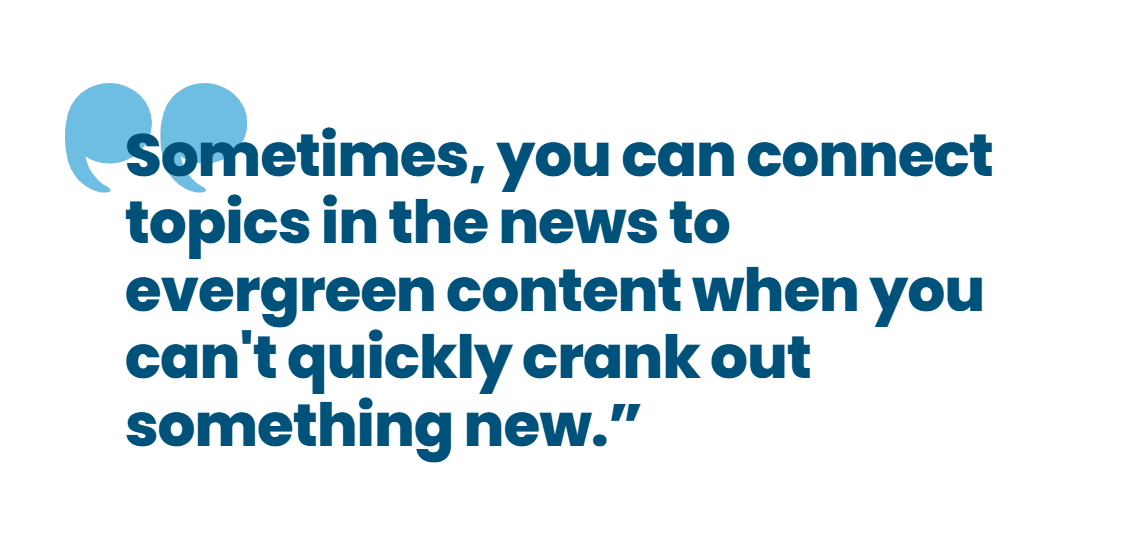
Connecting evergreen content to topics in the news
Key Takeaways:
- Evergreen content can fill gaps when timely commentary isn’t possible.
- Revisiting and updating evergreen content regularly ensures it stays relevant and maximizes its usefulness for client engagement, SEO, and firm-wide sharing.
- Effective evergreen content stays relevant if it’s built with timeless insights, flexible attribution, varied lengths, and minimal expiring data.
There’s a place for evergreen content—and not just tucked away in the “resources” section of your website. Sometimes, you can connect topics in the news to evergreen content when you can’t quickly crank out something new.
For example, say you’re a marketing manager at a wealth management firm and Congress just passed a new estate tax law. If you can’t quickly get comments together about the legislation itself, maybe you’d introduce an evergreen selection along these lines:
Congress just finalized the new estate tax regime and the president is expected to sign it. In our next commentary [or video], we’ll look at the biggest implications. Meanwhile, you may benefit by revisiting your existing plans. Here are five questions to help you identify what’s most important to you, regardless of the tax rules. <link to your evergreen content>
Granted, this is not as satisfying as commenting on the legislation itself. But in the meantime, you’re demonstrating to clients that you are paying attention. And you’re making use of evergreen content that might otherwise just sit on a shelf.
Here are some suggestions for refreshing evergreen content—and for crafting evergreen content that’s easier to refresh in the first place.
- Historical perspective. Say a financial advisor writes a bylined article about current market volatility. If that article contains historical perspective, you might be able to strip out some of the current-market references and create an evergreen piece about volatility in general.
- Attribution. Say you’re a wealth management firm and your in-house market strategist—who works with clients across the firm—writes a piece on inflation. The attribution to the strategist continues to offer benefits when you adapt the article to become evergreen, because the strategist’s expertise is relevant to all your financial advisors. Now say the original article is attributed to a specific financial advisor—someone unknown to clients of your other advisors. Maybe they’ve even left the firm. In that case, it may be practical to remove the specific attribution when you adapt the article for evergreen purposes. A general firm-level attribution may mean your various advisors are more likely to share as “their” or “our team’s” view a post you make on your firm-level social media accounts.
- Length. Evergreen content can be useful to your customers—and support your SEO efforts—across a wide range of lengths, from short blog posts to long white papers. Length is largely irrelevant with respect to connecting the content to current happenings via e-newsletters and social sharing. However, as you develop your evergreen content library, keep in mind that a greater number of articles gives you more flexibility. Given time constraints, you may want to develop, say, one or two longer articles and several shorter articles rather than just a small handful of longer ones.
- Easy to update. Even evergreens sometimes need sprucing up (see what I dad-joked there?). Figure on revisiting evergreen content about once a year. If a data point would need updating more often than that—for compliance or contextual reasons—consider cutting that data if the piece can still hold together.
Sometimes, it’s a good idea to let evergreen content come to your rescue.
Subscribe.
Receive the latest news and insights from Lowe Group.